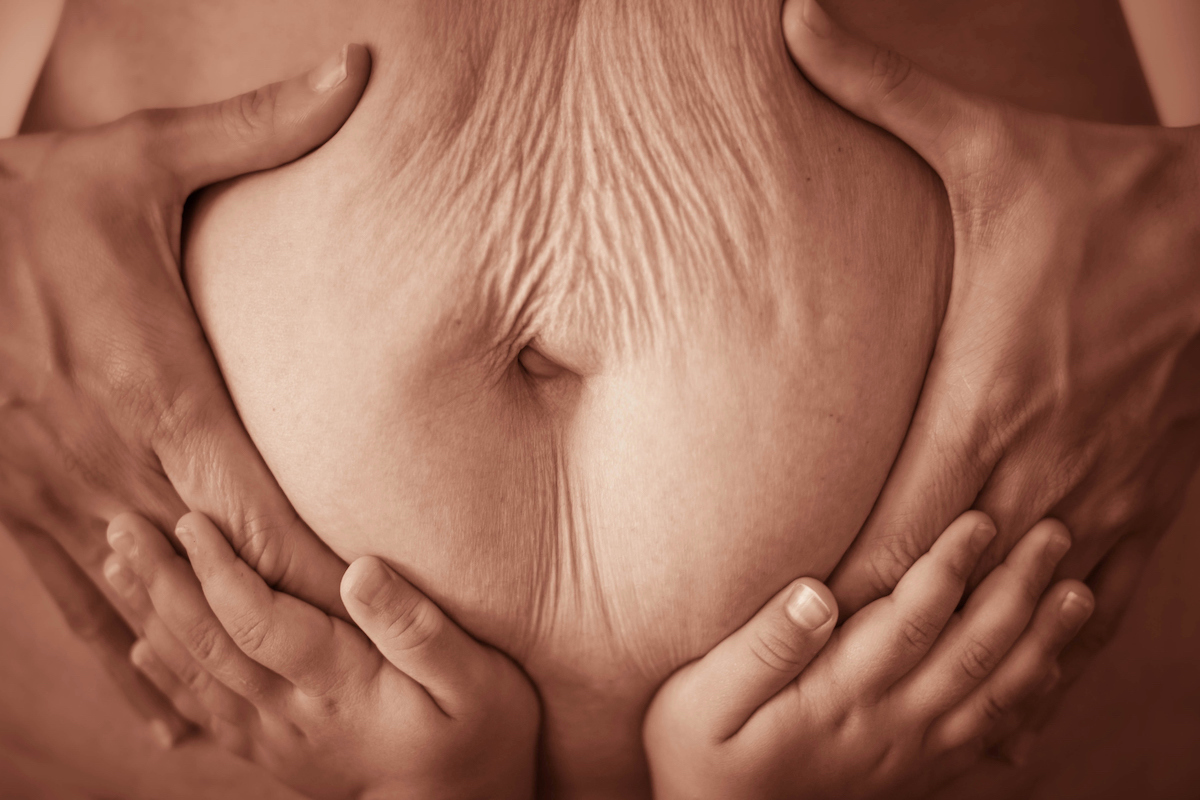Even if they have read Expecting Better, most people restrict what they eat during pregnancy at least somewhat. When the baby finally arrives, there are some foods that come right back on the menu (deli turkey sandwiches, for example).
When it’s about breastfeeding, though, the questions are much more predictable and really come in two types.
First, there are the questions about whether your eating during breastfeeding impacts your baby and, more pointedly, whether it makes them act like a jerk. Babies cry a lot, and in our search for meaning, the question of whether what we eat matters often comes up.
Second, there are the recreational questions, specifically about alcohol or marijuana. These reflect in part, I think, the desire to return to something like “normal” post-pregnancy. Also, sometimes you just want a glass of wine.
Below I dive into three breastfeeding diet topics:
- What about marijuana?
- What are the links between the foods you eat and infant colic? (Mostly I’ll talk about dairy.)
- Can you have alcohol, and, if so, how much?
Does your diet when breastfeeding affect your baby’s mood?
This is a hard question to answer, because babies are unpredictable. As an adult, we often have a good sense of which foods agree with us or not. For example, I love nachos, but I know that I cannot eat them. That knowledge is based on a combination of experience and experimentation. With a baby, the overall variation in behavior can leave us looking for meaning where there is none. If I eat cabbage today and my baby farts a lot tomorrow, there is a temptation to link cabbage and gas. But honestly, babies fart a lot.
What this means is that there’s a strong imperative for experimentation in this space. Where this has been somewhat explored is in the possible link between colic and allergenic foods. In particular, one possible treatment for infantile colic (excessive crying) is to try cutting out common allergens from the breastfeeding diet or by switching to a low-allergen formula.
There is one randomized trial, from 1995, that evaluated this type of intervention. It took 38 formula-fed and 77 breastfed babies and randomized them into a typical diet or a low-allergen diet, either using a low-allergen formula or (for nursing mothers) eliminating nuts, wheat, dairy, and eggs from their diet. Needless to say, this is extremely restrictive. The paper found a reduction in parent-reported infant distress eight days after adopting the new formula or diet (39% of the treatment group reported less distress relative to 16% of the control).
This is only one study, though, and the combination of the fact that parents knew if they were in the treatment group and the outcome being self-reported leads us to some concern about reporting bias. And indeed, a larger review of this question notes that in general the evidence for or against the role of diet in infant colic is sparse.

Low-allergen diets focus on many allergens, but the question that seems to come up most often in public discourse is milk allergy. People raise the concern that maternal consumption of dairy products is a common cause of infant fussiness or discomfort. This could occur if the infant has an allergy to cow’s milk (sometimes just referred to as CMPA, for cow’s milk protein allergy).
CMPA has two types — IgE- and non-IgE-mediated. IgE-mediated allergy shows up with more standard allergy symptoms: fast onset after consumption, vomiting, lethargy, respiratory illness. Diagnosis of this type of allergy is typically straightforward, and it will respond to dietary changes.
It is much harder to diagnose non-IgE-mediated allergy to cow’s milk because the symptoms are much less specific. In some cases, there are bloody stools (a strong signal of intolerance), but this allergy is also blamed for a more general set of symptoms — crying, diarrhea, vomiting — that happen a lot anyway. There’s no test, so the diagnosis is based on symptoms and on the infant reaction to changes in diet.
There is some controversy, then, over the question of whether this intolerance is overdiagnosed. In 2020, there was an absolutely scathing article in JAMA arguing, effectively, that a huge share of these cases are simply overdiagnosis. The authors write that the actual prevalence of CMPA in the population is probably 1% to 2%, with most of that being the easier-to-diagnose IgE form. They note, though, that something like 14% of parents say their child has this sensitivity.
The paper goes on to say that the concentration of cow’s milk proteins in breast milk is low and unlikely to trigger a response in infants. Their overall claim is that this is dramatically overdiagnosed, leading to more reaction among parents than is necessary and to unrealistic, or at least annoying, changes in diet. They blame, in part, influence from formula manufacturers and their desire to sell specialized formulas.
This article has a blistering tone that is rare in an academic paper, making it an entertaining read. But it also has a potentially reasonable point, one I have heard echoed from many pediatricians (including my own). Namely, we shouldn’t jump to dairy elimination with a baby who is just fussy. Changing diet in this way may make sense with more direct evidence — bloody poop, for example — but it shouldn’t be the first line. Definitely talk to your pediatrician before you make any big changes in either diet or formula choice.
If you do want to try making a change, be a little patient. Based on what we know about protein elimination from the bloodstream, you’d want to give it a couple of weeks.
Can I drink alcohol while breastfeeding?
Not dissimilar to the case of Botox, evaluating the possible impact of alcohol during breastfeeding is somewhat easier than evaluating the impacts during pregnancy. This is because you can directly measure the alcohol in breast milk. At a minimum, this can give a sense of the plausible exposure.
When you drink, the alcohol level in your milk reflects the alcohol level in your bloodstream. This ends up meaning that even if you drink a large amount, the amount of alcohol passing through the breast milk is quite low. In one paper, researchers calculated that even if you have four drinks extremely quickly and then breastfeed at the maximum blood-alcohol level, the exposure for the baby is still extremely low.
There is some suggestion that chronic, heavy alcohol use can impact infants in the short term, but these studies generally have very limited samples and a poor ability to control for other differences across families. Randomized studies of mothers consuming small amounts of alcohol show very limited effects. There is no good evidence of any long-term developmental effects of alcohol in breastfeeding.
The NIH’s LactMed database reports: Casual use of alcohol (such as one glass of wine or beer per day) is unlikely to cause either short- or long-term problems in the nursing infant.
So, good news! And if you want to be extremely cautious, or you’re thinking of a big party night out and worried about the impacts of heavier drinking, this document has a helpful reference for how long you’d need to wait to be sure that the alcohol was out of your system. For a 150-pound woman, it’s about two hours for one drink, four hours for two drinks. If you have nine drinks, it could take almost a day (but also, don’t do that).
Final side note: There is no benefit to pumping and dumping. You would only want to do so if you’ve decided to wait to nurse and you need to pump to either keep up supply or for comfort reasons.
What about marijuana?
The evidence on marijuana is much more complicated. There are some studies that link cannabis consumption during breastfeeding to developmental outcomes for kids. The results are mixed, but all these studies are very hard to interpret. Cannabis consumption is associated with other characteristics and consumption, while breastfeeding is also associated with consumption in pregnancy. It would be hard to separate these.
In the case of breastfeeding, though, there is another approach to the question: testing the milk directly to see what the cannabis concentration is and how long it lasts. A 2021 paper did just that, using 20 nursing mothers who reported using recreational cannabis. There are a few findings of note. First, there is a positive (though not perfect) correlation between THC concentration in the blood and in milk, with higher concentrations in the milk. On average, the concentration in the milk is about seven times as high as in the blood.
Second, THC concentrations in breast milk fell fairly quickly over time. They were high, on average, for the first 5 to 10 hours after use, and remained elevated through about 15 hours. Samples that were tested more than 15 hours after use showed little or no THC concentration in milk. In a second paper, with eight women studied using a similar approach, the fadeout was faster: low concentrations by about five hours. This second paper has the advantage of doing a true challenge — the researchers gave the cannabis and tested blood over time. The first relied on self-reports about timing.
One can do some calculations based on this that suggest that the dose of cannabis an infant would receive through milk is fairly high (perhaps a third of an adult dose, weight-adjusted) if nursing occurred immediately after smoking, but lower (less than 1% of an adult dose) if nursing occurred hours later.
The piece that is missing here is an understanding of the possible risks of cannabis consumption to babies; that is not part of this calculation. This leaves us, I think, with remaining questions and — in my mind — remaining reason for caution about use at all. But there is an important, concrete takeaway: If you do choose to consume cannabis while breastfeeding, waiting 5 to 10 hours after consumption to nurse is a very good idea.
People often ask about CBD. It passes through to breast milk like THC, so the same basic concerns appear. There is little or no evidence directly on CBD from animal models. In human data it is difficult to separate the two compounds, because analysis tends to focus on marijuana overall, not individual components. Given the tremendous rise in the use of CBD for anxiety and a million other things, I would really hope we’d get better data on this one.
The bottom line
- A possible treatment for infantile colic is to try cutting out common allergens from the breastfeeding diet. This type of diet is incredibly restrictive and isn’t always worth it. In the case of a suspected milk protein allergy, most pediatricians recommend eliminating dairy from your diet where there is direct evidence (namely, bloody poop), but that shouldn’t be the first line. Overall, it’s best to talk to your pediatrician before you make any big changes in either diet or formula choice.
- When you drink, the alcohol level in your milk reflects the alcohol level in your bloodstream. This ends up meaning that even if you drink a large amount, the amount of alcohol passing through to the breast milk is quite low. If you want to be extra-cautious, waiting to nurse roughly two hours after your last drink is sufficient.
- There is no benefit to pumping and dumping. You would only want to do so if you’ve decided to wait to nurse and you need to pump to either keep up supply or for comfort reasons.
- If you choose to consume cannabis while breastfeeding, you should wait 5 to 10 hours after consumption to nurse. There is not sufficient evidence about CBD usage.















